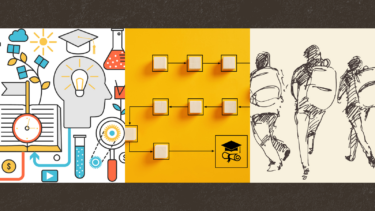States Prioritize Stakeholder Engagement, Continuity Plans in School Reopening Guidance
Alexandria, VA – A new NASBE Policy Update outlines trends in state reopening guidance for the 2020–21 school year. Informed by public health guidelines and existing data on the state spread of COVID-19, state guidelines established a process for engaging stakeholders, a menu of approaches to learning, and a focus on equity, according to the analysis.
Stakeholder engagement was a critical component in crafting reopening guidance in many states. Twenty-seven states and the District of Columbia gathered health and education stakeholders to collaborate on school reopening guidance and safety. State boards of education in Illinois and New York established such task forces and committees. In other states, it was the governor, state chief, or department of education leading the charge.
Twenty-six states included a tiered approach in their reopening guidance, allowing districts to select models based on the prevalence of COVID-19 in their schools or communities. The most common state reopening options included a continuation of distanced learning for all, a combination of in-person and remote learning, and a return of all students to school in person. Arizona added guidance for continuity in operations to help leaders prepare for future school closures.
Connecticut, Maine, and Oregon prioritized equity in reopening. In their guidance, they recognized the disproportionate impact coronavirus has had on certain populations and outlined a framework for decision making that commits resources to support the social-emotional needs of all students.
Author Joseph Hedger points out that school reopening plans will evolve as new research becomes available and local conditions change. “In a charged political environment, policymakers will need to be prepared to effectively communicate new decisions made at national, state, and district levels,” he writes.
Read “States Make Plans for Reopening.”
NASBE serves as the only membership organization for state boards of education. A nonpartisan, nonprofit organization, NASBE elevates state board members’ voices in national and state policymaking, facilitates the exchange of informed ideas, and supports members in advancing equity and excellence in public education for students of all races, genders, and circumstances.
###
Related Content
-
States Make Plans for Reopening
In anticipation of the 2020–21 school year, states have been creating and updating guidance for district and school reopening plans. Several trends emerge.


 i
i
 i
i